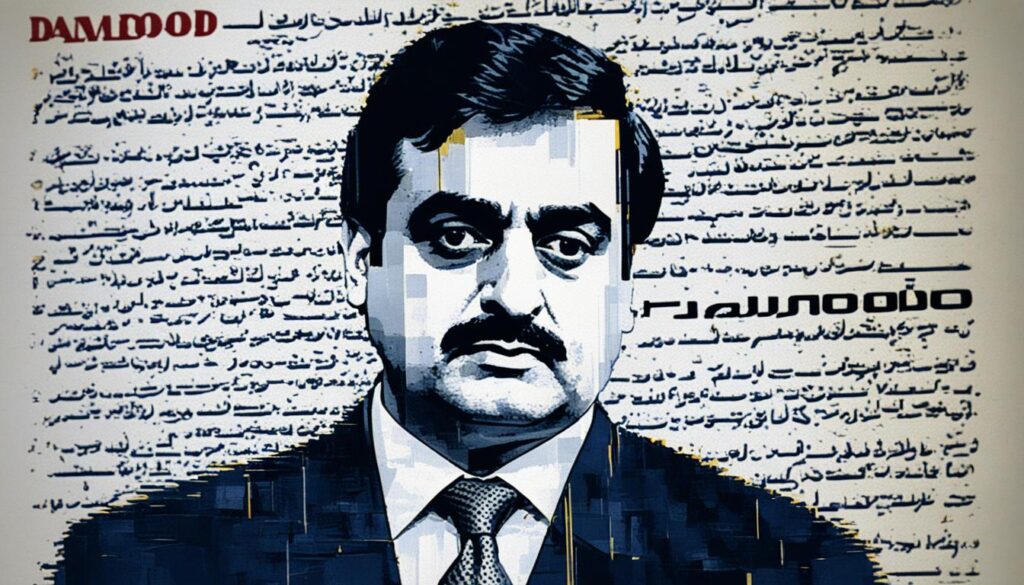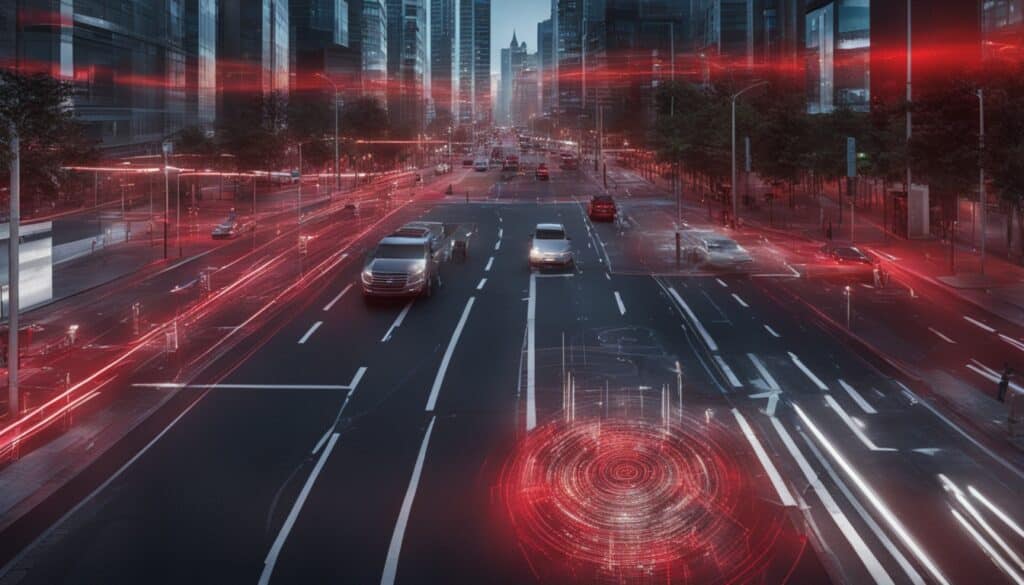Artificial intelligence (AI) has made a big leap forward. It has created a possible current image of Dawood Ibrahim, a fugitive and global terrorist. He is wanted by Interpol for his part in the 1993 Mumbai serial bomb blasts. This shows how AI is changing the way we solve crimes, especially with facial recognition and age progression.
Key Takeaways
- AI-generated composite images can help law enforcement agencies track and identify fugitive criminals like Dawood Ibrahim.
- Advances in facial recognition and age progression technology enable the creation of realistic images of individuals, even after decades of hiding.
- Biometric data and digital forensics are increasingly being leveraged in criminal investigations, empowered by AI and machine learning algorithms.
- The use of AI in law enforcement raises ethical concerns, such as privacy, bias, and the potential for misuse, which must be carefully addressed.
- Collaboration between law enforcement, technology experts, and policymakers is crucial to ensure the responsible and effective deployment of AI in the pursuit of justice.
Facial Recognition and Age Progression: AI’s Role in Criminal Investigations
Artificial intelligence (AI) is changing how police solve crimes. Facial recognition and age progression tech are key tools. They help find and catch criminals in new ways.
The Interplay of Artificial Intelligence and Biometrics
Biometrics is all about identifying people by their looks or behavior. AI has made it better, letting police quickly find suspects from photos. With artificial intelligence, they can check lots of images fast.
Advancements in Age Progression Technology
Age progression technology is a big deal. It uses AI to show how someone might look in the future. By mixing facial biometrics with smart image tech, police can make pictures of suspects when they’re older. This helps them catch fugitives.
AI tools have changed crime solving. They help find evidence and identify suspects better. This leads to more justice.
“The combination of facial recognition and age progression technology has been a game-changer in the world of criminal investigations. It has empowered law enforcement to pursue even the most elusive fugitives and deliver justice more effectively.”
AI Creates Possible Current Image of Fugitive Dawood Ibrahim
Artificial intelligence (AI) is changing how we track down criminals. It’s especially useful in finding fugitives like Dawood Ibrahim. He’s a top criminal and planned the Mumbai terror attacks. Ibrahim has been hiding from Interpol and police for years.
Now, AI can make images that might look like Ibrahim today. It uses old photos, biometric data, and other info to do this. This means we might see what Ibrahim looks like now through an AI-created image.
This could really help police find Ibrahim and others on the run. AI images can give a clear picture of who they’re looking for. This could lead to new tips and help catch these criminals.
“The ability to create a plausible current image of Dawood Ibrahim using AI technology is a significant breakthrough in the fight against transnational organized crime. This innovative approach can be a game-changer in the pursuit of the world’s most wanted criminals.”
As AI gets better, we’ll see more of it in crime fighting. Being able to show what fugitives like Ibrahim look like now can really help police. It makes it easier to keep communities safe.

Law Enforcement Leveraging AI in Pursuit of Most Wanted Criminals
Law enforcement agencies are using artificial intelligence (AI) to catch high-profile fugitives like Dawood Ibrahim. AI helps them in their investigations. Digital forensics and image enhancement, powered by AI, are key tools in fighting crime.
Digital Forensics and Image Enhancement Techniques
AI has changed how police handle criminal cases. It uses machine learning to quickly find and analyze digital evidence. AI-powered visual data analysis can improve low-quality images and facial features. This helps in identifying and tracking suspects.
Artificial intelligence and forensic technology are powerful tools for police. They help find hidden evidence and connections. As these technologies get better, we’ll see more effective ways to catch criminals.
“The integration of AI-driven digital forensics and image enhancement has revolutionized the way law enforcement agencies approach criminal investigations.”
AI lets police access and analyze a lot of digital data. They can look at social media and surveillance footage. This helps them understand a criminal’s actions and where they are. It makes identifying suspects and building a strong case easier.

AI is becoming more important in law enforcement and criminal investigations. By using new technologies, police can catch the most wanted criminals. This keeps communities safe and ensures justice is done.
Ethical Considerations and Potential Implications
As AI becomes more common in criminal investigations, especially with facial recognition and age progression, we must look at the ethical sides. The ethical issues with AI tools in law enforcement are complex and need close attention.
One big worry is biased and inaccurate AI systems causing wrong arrests, especially in communities already facing bias. Artificial intelligence might add to racial and ethnic profiling, which is bad for fairness and justice.
Also, we must think about privacy rights. More use of facial recognition and age progression by police raises big privacy concerns. We need strong rules and international legal frameworks to protect our rights and keep us safe from national security threats.
| Ethical Consideration | Potential Implication |
|---|---|
| Algorithmic Bias | Wrongful arrests, detentions, and perpetuation of societal biases |
| Privacy Concerns | Unauthorized surveillance, misuse of personal data, and violation of individual liberties |
| International Legal Frameworks | Ensuring the responsible and lawful application of AI-driven technologies across jurisdictions |
As AI in criminal investigations grows, we need to talk more about these ethical issues. This includes policymakers, law enforcement, and the public. We must work together to address these concerns and lessen the bad effects. Research and strong rules are key to making sure AI respects justice, privacy, and human rights.
“The ethical use of AI in criminal investigations is not just a technical challenge, but a societal responsibility that requires collaboration and transparency.”
Conclusion
AI technology is changing how we track down fugitives like Dawood Ibrahim. It uses facial recognition and age progression. This makes catching the most wanted criminals easier for police.
But, we must use these technologies wisely. We need to protect privacy and keep the public’s trust. This means being careful and open about how we use AI.
AI is making big strides in fighting crime. We must balance its benefits with the risks it brings. By doing this, we can use AI to make our communities safer and bring criminals to justice.
AI will keep playing a big role in law enforcement. It will help us solve crimes and track down criminals better. As we move forward, we must use AI in a way that respects justice, human rights, and the law.



